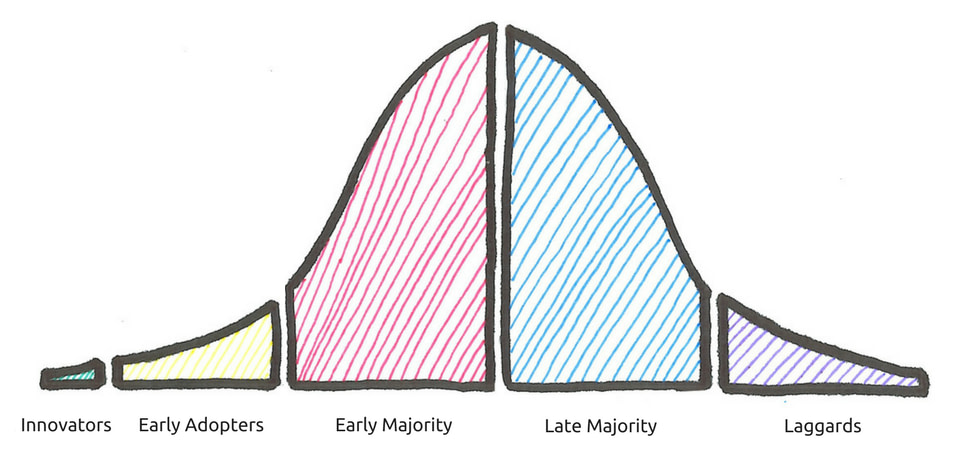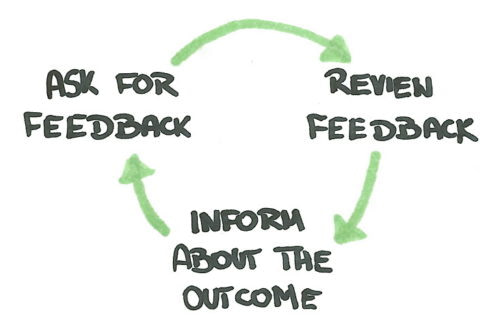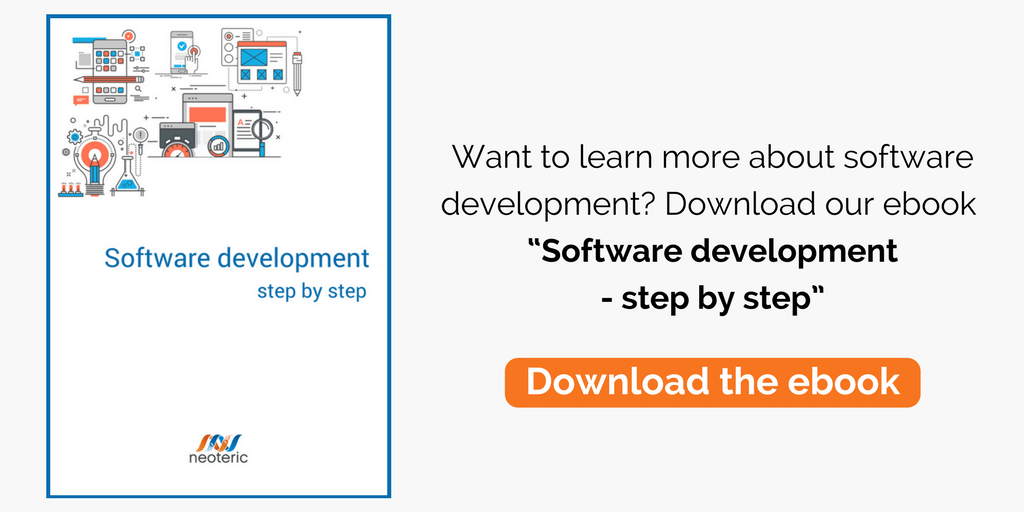What is validation and why is it necessary?
The ultimate validation is when you can do business with your product or service. That means that you can create a company that is sustainable, that brings profit, and achieve your bigger goals.
In order to do that, you need to put your product or service on the market and you need to be able to do it in a way that is profitable. But for this ultimate validation, you need to have a product – or whatever you are working on. To get that, you need to mitigate the risk of missing the market. And you do that by controlling the way you spend your money and effort, and by… validating your idea before you start your project.
Ok, that sounds tricky. The thing is that no early validation can give you a guarantee that your product will succeed. You will know it when it does. Before, you can only increase its chances. And by doing an early validation – you increase them a lot. Today, I’m going to share some advice on how to do it.
How to validate your startup idea?
1. Focus on solving the problem
Speaking about validating the idea at a very early stage, people often bring up the famous quote attributed to Henry Ford. He is believed to have said that if he had asked potential customers what they wanted, he would be breeding horses that run faster, eat less, and make less mess.

No matter whether he actually said it or not (if you are curious about the quote’s origin, read this article), it does not mean that one should not listen to customers (or potential customers). It only means that one should not listen to the solution that the customers know and have in mind.
What Henry Ford did, and what every really innovative market does, was that he focused on understanding what the customers’ real problem was. And the problem was that transportation was too slow and too unclean. So he found a solution to moving faster and making less mess than a horse does.
In order to succeed, to make a change on the market, you need to understand the problem that your customers face.
2. Identify and reach out to your target group
The important thing is that you need to talk to the right people within your target group. There is a theory called the diffusion of innovations. It divides customers into certain groups: innovators, early adopters, early majority, late majority, and the laggards. I wrote about it in my last article about product development (you can read it here: Don’t start making your app with an MVP!).

They key is to understand how willing those people are to find new ways of doing things and to test these things. The group you need to target first is the innovators. These are the industry experts, journalists, bloggers or some innovation managers of big companies. They are most active, most forgiving, and most willing to share feedback.
In order to reach them, you need to find out where they look for information and where they discuss the issues related to what you do. Once you know it, you can try to interact. Show yourself as an industry expert. Establishing relations and getting into the community that is around the problem you’re trying to solve at an early stage will help you later when you will be building your product recognition. Don’t hesitate to ask how other industry experts, bloggers or other influences see your way of understanding the problem.
3. Get answers to 3 questions
1. What is your customers’ real problem?
And by ‘real problem’ I mean not a conscious need, but a problem that stands behind that need. Not a faster horse, but something that would make it faster to get from one place to another. You need to look outside of what’s obvious to find the answer, otherwise you will only come up with a solution slightly better that the one already existing.
2. Why would they use your product?
Is their current solution enough? Are they fully satisfied with it? Do they ever complain about it? Would they be able to recognize your solution as something worth trying? If they don’t feel they have a problem, they may not be very likely to test your solution.
3. What solutions do you compete with? What are the biggest threats to your product?
Note that the biggest threat to your business is not an app (or other product, or service) that is just a little different from yours but basically remains within the same category. The biggest threat is that your customers will keep doing things the way they do. And that they won’t be willing to change that at all. Neither for your product, nor for your competitor’s product.
4. Talk about your idea
… as soon as possible. You don’t need a single line of code for that, you don’t need a 3d prototype, and you don’t need almost any effort for that. Just go to a meetup, go to a conference, visit VC open days within your target industry, and talk about your idea.
Don’t worry that someone may steal your idea. Believe me, unless you’re really changing the world, there is no need to overprotect it. And, let’s agree, creating a bot, creating a new e-commerce site, building a fancy feature, or using Machine Learning to do something that you can code in a few months is not changing the world. Unless we are talking about huge patents that can literally change the whole industry, it’s simply not worth to keep it a secret. The feedback you can get when you talk about it is worth much more than the bare idea. Remember that the idea is just a multiplicator for the execution.
5. Establish a feedback loop
Collecting feedback is important but it’s even more important to make use of it and to transform it into a process.

By letting your customers know that you care and value their opinions, you establish relationships and build brand loyalty. Just imagine how you would react to an e-mail saying:
Hey,
I just wanted to thank you for your feedback and let you know that we introduced the change/feature/integration that you suggested.
Let me know how you like it!
Best,
6. Know your competitors
If you want to compete, you need to know what you compete with. Note that your competitors are not only those who have a product similar to yours but with different design or some non-core features. Your competitors are the ones who solve the same problem – in any possible way.
In order to create unique value, you need to understand your competition as a different way of solving the problem that you are attacking.
Just a quick example: think about big airlines – United or Lufthansa. Are airlines such as Ryanair, Wizzair or Easy Jet their competition when we consider business-class customers? Not really. People who pay 10 or 20 thousand dollars for a flight are not into narrow chairs and going with the crowd. The real competition for the big airlines is Skype or Zoom. Here is why:
20 years ago, when a CEO from London needed to negotiate a contract with the executive board of some company from New York, and the simple phone call was not enough, he would fly to meet them. He would take business class, he would book an apartment in a 5* hotel, and they would have a face to face meeting. Now, with Skype, they just have a video conference, discuss whatever they need, share their screens for presentations, and send the documents. And this is a huge cash loss for the big airlines (and so for the 5* hotels).
7. Understand your competitors
Half of the job is done when you know your competitors. You are aware of different solutions to the problem that you are addressing. You know how each of them approaches this problem, what their competitive advantages are, and how much it costs to use their solution.
And this is where many people stop. They go to the pricing page of different CRM systems, they find out that both these tools are pretty expensive, they decide to go 20% lower, 50% lower, and they say that they will do the CRM, and they will offer it to the market. But that is simply not enough. To know how to compete with other products/services, you need to understand where they get customers from, what their target group is, and what their pitch is like. Is it rather “We will help you save time” or “We will help you convert your leads better”? This knowledge will help you understand what they identify as their competitive advantage.
When doing research about your competitors, you need to go deep. Test out the products, check the onboarding process, understand their content strategy, look at their social media, and most importantly – listen to their customers. Check what people say about these products, what they have problems with, what features they request. Very often, you can find those answers among blog comments, discussions on Facebook groups, or even on a company’s Facebook wall.
Read also: 29 Tools to validate your idea before building MVP

Key takeaways
- When working on the feasibility study, address the right group. Start with the innovators. Do not approach early adopters unless you are able to prove that your solution is 10 times better and 5 times cheaper than whatever they do right now.
- Establish a feedback loop. Get feedback, iterate on it, and repeat. When you gather more and more customers, when you get to the proof of concept, when a customer starts paying for your solution, then you can move up with your product development.
- Do not start your startup with your last money! I know that stories about entrepreneurs who make their idea come true and succeed are really appealing but you need cash to do that. If you really have a dream of having a company, you need to be able to invest in it. In the early days, you need to be able to focus on getting feedback, not money.

